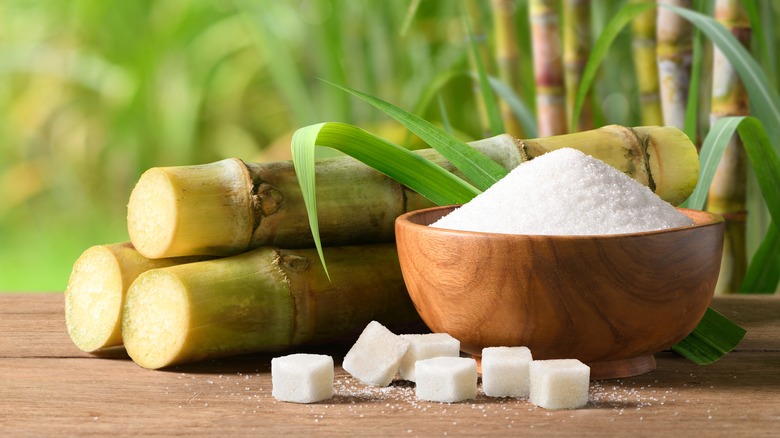Examining beet sugar vs cane sugar reveals distinctions in economic factors and availability.
Examining beet sugar vs cane sugar reveals distinctions in economic factors and availability.
Blog Article
Exploring the Differences being used and Advantages In Between Beet Sugar Vs Cane Sugar
In the cooking world, the option between beet sugar and cane sugar is not just regarding sweet taste however entails a nuanced factor to consider of taste, application, and effect. While both sugars stem from various plants, each undertakes distinct production procedures that discreetly influence their features and suitability for different recipes.
Origins and Production Procedures of Beet and Cane Sugar

Cane sugar, on the various other hand, comes from the sugarcane plant, a tropical yard belonging to Southeast Asia but currently cultivated in exotic zones worldwide. The manufacturing of cane sugar starts with the harvesting of cane stalks, which are squashed to launch the juice. This juice is then steamed to focus it, after which it is spun in centrifuges to generate raw sugar crystals. These crystals are additional refined to create the white sugar frequently offered in shops.

Nutritional Material and Health And Wellness Considerations

When comparing the nutritional material of beet sugar and cane sugar, it becomes obvious that both types essentially provide the exact same calorie worths, with about 16 calories per tsp and no substantial nutrient diversity. Each is made up nearly entirely of sucrose, which is a basic carbohydrate that uses fast energy yet lacks vitamins, minerals, or fiber. This resemblance expands to their effect on health, specifically concerning blood sugar level levels. Both sugars, when eaten over, can add to raised blood sugar levels, a threat element for diabetes mellitus and other metabolic conditions. Too much consumption can lead to weight gain and dental problems, as both sugars are similarly cariogenic, advertising tooth decay. From a health and wellness viewpoint, moderating intake of any type of kind of sugar, whether from beet or cane, is advisable to avoid these potential unfavorable impacts on wellness. Therefore, neither holds an unique advantage over the other in terms of health and wellness benefits.
Taste Profiles and Culinary Applications
Regardless of their comparable chemical structures, beet sugar and cane sugar vary subtly in taste, which can influence their usage in different culinary contexts. Walking cane sugar commonly brings a hint of molasses, also in its refined form, providing a warm, caramel-like touch that enhances baked items, coffee, and chocolate-based recipes. This mild molasses flavor is specifically valued in the cooking industry for including depth to desserts and pastries. On the various other hand, beet sugar is characterized by its very refined, neutral preference, making it a flexible sugar that does not change the flavor profiles of dishes. This nonpartisanship is particularly advantageous in fragile recipes, such as light breads, creams, and over at this website some sauces, where the integral flavors of various other components are intended to attract attention. Cooks and food manufacturers may select one kind of sugar over the various other based on the desired taste result of their culinary developments.
Ecological Impact and Sustainability
While both beet and cane sugars are obtained from plants, their environmental impacts differ significantly due to the distinct methods of cultivation and handling needed for each. Sugar beet growing typically includes extensive mechanization, which can enhance fossil fuel usage and carbon exhausts.
Moreover, the handling of sugarcane usually generates a substantial amount of waste, consisting of bagasse, which, although functional as biofuel, regularly contributes to air pollution if melted inefficiently. Sugar beet handling uses more of the raw products, resulting in less waste. Both sectors encounter difficulties in reducing their ecological footprints, yet continuous innovations in farming techniques and waste management are aiming to improve sustainability.
Economic Elements Influencing the Sugar Market
The financial dynamics of the sugar industry are substantially influenced by international market demands and profession plans. In areas where sugarcane or sugar beet manufacturing is subsidized, producers might have a monetary advantage that allows them to offer reduced costs on the global market.
In addition, variations in worldwide need for sugar, influenced by nutritional patterns and commercial use in foodstuff, straight impact prices and production levels. beet sugar vs cane sugar. Climate condition additionally play a pivotal duty, as they can dramatically influence plant yields and, consequently, the supply chain. This variability presents a degree of YOURURL.com economic uncertainty that can lead to investment volatility in sugar manufacturing fields, influencing choices from growing to market approach
Verdict
Finally, both beet and cane sugar have special top qualities that suit different culinary demands. While cane sugar conveys a rich taste suitable for enhancing baked goods, beet sugar's neutrality is perfect click for source for lighter dishes. Nutritional resemblances notwithstanding, their unique production procedures and environmental impacts add intricacy to the selection in between them. Therefore, comprehending these differences aids chefs and customers make informed decisions that line up with their wellness, culinary, and honest preferences.
Report this page